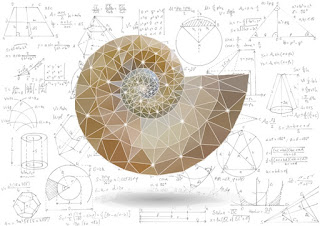DESMA 9 Week 4 Blog
Before this week, I honestly couldn't tell you how Medical Technology and Art were in any way related. But through the lectures and my additional research, I have found that these two ideas converge all over modern and post-modern art as well as many other places. The first cool thing I found in my research was an entire article on the use of medical technology in art. The one artist that really stood out to me was Marilene Oliver who experimented with the use of MRI (magnetic resonance imaging) in art. This picture I've included is entitled Family Portrait, and all 4 images are MRI's of an entire family. I think these images are so unique and interesting, especially when you think about how these items of Medical Technology also serve as eye-appealing art.
 However, sometimes people can take these things too far. For example, the girl Orlan from lecture disfigured and reshaped her body to try and maximize her aesthetic beauty. I find operations like these pretty ludicrous considering the price tag as well as the negative effects. In an article with the Huffington Post, Orlan talked about how she didn't care about looking younger or better, she just wanted to "disrupt the standards of beauty." I find this interesting because I don't really see how giving yourself surgical operations will disrupt the standards of beauty. Because of this, I don't really see where Orlan is coming from, but I definitely appreciate her dedication to her craft.
However, sometimes people can take these things too far. For example, the girl Orlan from lecture disfigured and reshaped her body to try and maximize her aesthetic beauty. I find operations like these pretty ludicrous considering the price tag as well as the negative effects. In an article with the Huffington Post, Orlan talked about how she didn't care about looking younger or better, she just wanted to "disrupt the standards of beauty." I find this interesting because I don't really see how giving yourself surgical operations will disrupt the standards of beauty. Because of this, I don't really see where Orlan is coming from, but I definitely appreciate her dedication to her craft.
I also discovered that the Johns Hopkins School of Medicine has an entire Department called the Department of Art as Applied to Medicine. Upon looking around their website, I found that they are doing a lot of work to make strides in areas like pancreatic cancer, liver transplants, and even how the "virtual resurrection of a new species of Hadrosauroid Dinosaur provides novel insight into chewing biomechanics. The fact that these two things are even in the same sentence blows my mind.
Forbes recently wrote a great article claiming that if more medical students would study art, then they would in turn become better doctors. The idea is that if you are a skilled doctor, you have probably been working the left side of your brain your entire life, but if you work the right side, say by studying art, then you will become more creative and have a broader understanding of how to address and solve problems. I agree with this sentiment, I think it is really important to get a broad education and to be as well-rounded as possible.
Finally, I found a number of cases where people were viewing the human body as art. On Art.com I found numerous paintings and drawings of faces, skulls, skeletons, hands, bodies, and even insides! The more I think about it though, the more I'm surprised that I have never noticed the art that lies within each and every one of our bodies. We are all beautiful, even though some believe they need to surgically alter themselves.
References:
Abbott, Wynn. "Medical Interventions—visual Art Meets Medical Technology." TheLancet.com (n.d.): n. pag. Web. 30 Apr. 2017.
Frank, Priscilla. "ORLAN Talks Plastic Surgery, Beauty Standards, And Giving Her Fat To Madonna." HuffingtonPost.com. 29 Jan. 2013. Web. 30 Apr. 2017.
"Theses." Hopkinsmedicine.org. Johns Hopkins University, n.d. Web. 30 Apr. 2017.
Glatter, Robert, MD. "Can Studying Art Help Medical Students Become Better Doctors?" Forbes. Forbes Magazine, 20 Oct. 2013. Web. 30 Apr. 2017.
Various Authors. "The Human Body Fine Art." Art.com, n.d. Web. 30 Apr. 2017.





Comments
Post a Comment